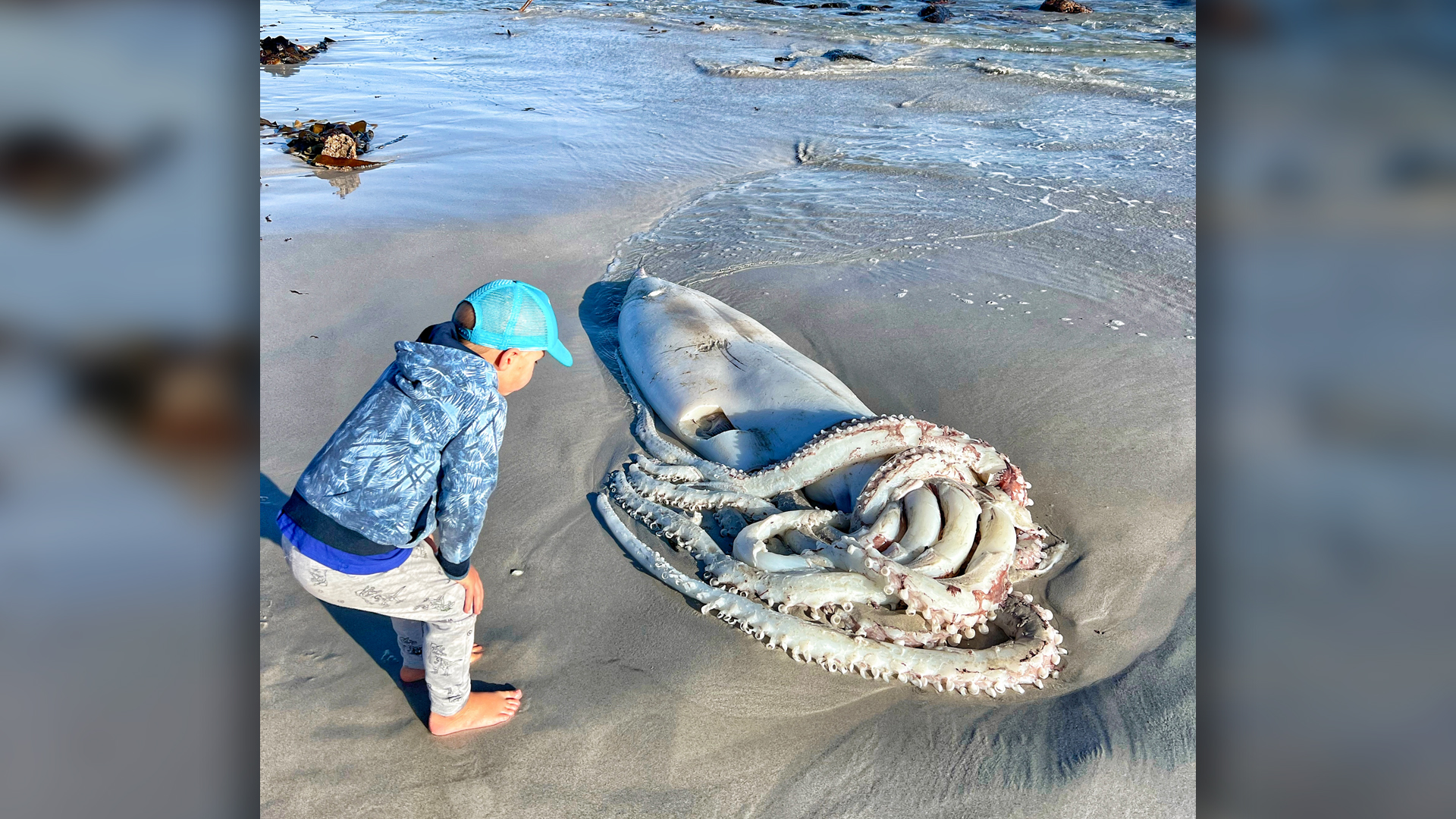
On April 30, beachgoers in Kommetjie, South Africa encountered a rare sight: a giant squid carcass on the sand at Long Beach.
Alison Paulus, a Cape Town resident and founder of the wildlife organization Volunteer and Explore, told Live Science in an email that it was incredible to see.
Giant squids are among the most elusive animals. They live in the ocean between 1,000 to 3,000 feet and rarely rise to the sea surface. The first photos of a live giant squid weren't captured until 2004, but for centuries, the only information scientists had about these creatures came from studying beached carcasses or remains found in the bellies of sperm whales.
A giant squid is rare on a South African beach. The baby giant squid washed up near Cape Town in 2020. The adult specimen that washed up in the same area in 1992 was just over 30 feet (9 m) long, according to the South African news site Independent Online.
RECOMMENDED VIDEOS FOR YOU...
What is the difference between arms and legs?
The squid beached at night after sustaining injuries, and we think it was from a boat propeller. Jon Friedman, a wildlife officer from the Cape of Good Hope Society for the Prevention of Cruelty to Animals, said that the animal was most likely struck by a ship.
The squid was two years old when she died, according to Friedman. Giant squids can live for up to five years and can reach lengths of 43 feet (13 m), though most top out at 36 feet (11 m).
The squid's eyes, beak, and portions of its tentacles were already removed by local fishers by the time the SPCA arrived. Some tissue samples were sent to the Iziko South African Museum for analysis, but most of the carcass was chopped up and thrown into the sea. The remains of 19 other giant squids are in the museum.
Paulus said that her family was thrilled to see the squid while it was still intact, even though she was disappointed that the body did not make it back to the museum.
It was originally published on Live Science.